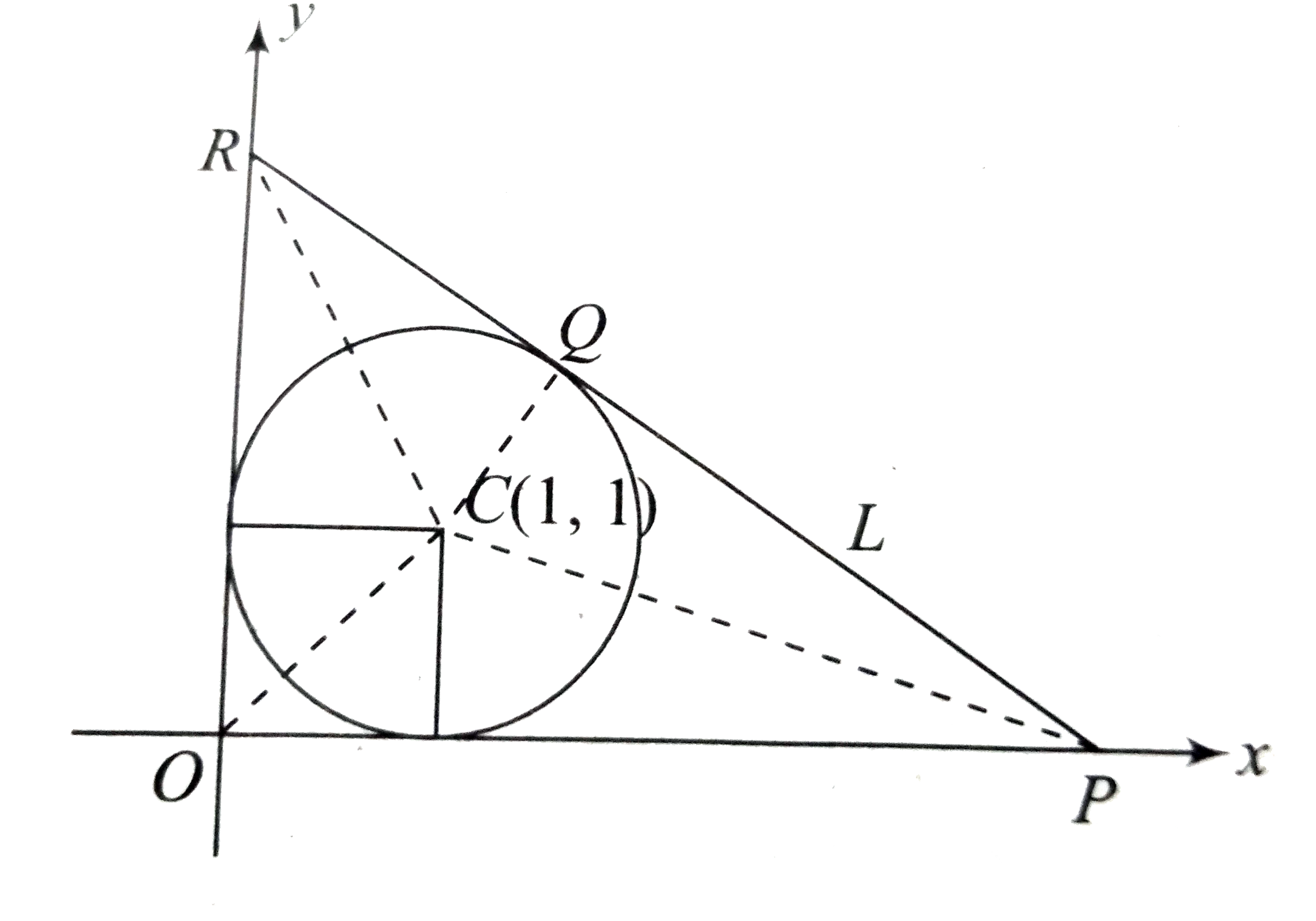If z(1+a)=b+icanda2+b2+c2=1, then [(1+iz)/(1−iz)= a+ib1+c b. b−ic1+a c. a+ic1+b d. none of these
a+ib1+c
b−ic1+a
a+ic1+b
none of these
The correct Answer is:A
1+iz1−izx=1+i(b+ic)/(1+a)1−i(b+ic)/(1+a)
=1+a−c+ib1+a+c−ib
=(1+a−c+ib)(1+a+c+ib)(1+a+c)2+b2
=1+2a+a2−b2−c2+2ib+2iab1+a2+c2+b2+2ac+2(a+c)
=2a+2a2+2ib+2iab2+2ac+2(a+c) (∴a2+b2+c2=1)
=a2+a2+ib+iab1+ac+(a+c)
=a(a+1)+ib(a+1)(a+1)(c+1)=a+ibc+1
Topper's Solved these Questions
- COMPLEX NUMBERSBook:CENGAGE ENGLISHChapter:COMPLEX NUMBERSExercise:MULTIPLE CORRECT ANSWERS TYPE
Explore 49 Videos
- COMPLEX NUMBERSBook:CENGAGE ENGLISHChapter:COMPLEX NUMBERSExercise:LINKED COMPREHENSION TYPE
Explore 36 Videos
- COMPLEX NUMBERSBook:CENGAGE ENGLISHChapter:COMPLEX NUMBERSExercise:EXERCISE3.11
Explore 6 Videos
- CIRCLESBook:CENGAGE ENGLISHChapter:CIRCLESExercise:Comprehension Type
Explore 8 Videos
- CONIC SECTIONSBook:CENGAGE ENGLISHChapter:CONIC SECTIONSExercise:All Questions
Explore 101 Videos
Similar Questions
If z=ω,ω2whereω is a non-real complex cube root of unity, are two vertices of an equilateral triangle in the Argand plane, then the third vertex may be represented by z=1 b. z=0 c. z=−2 d. z=−1
View SolutionConsider the complex number z=1−isinθ1+icosθ.
The value of θ for which z is purely real are
View SolutionIf α is complex fifth root of unity and (1+α+α2+α3)2005=p+qα+rα2+sα3 (where p,q,r,s are real), then find the value of p+q+r+s.
View Solution
In the diagram as shown, a circle is drawn with centre C(1,1) and radius 1 and a line L. The line L is tangent to the circle at Q. Further L meets the y-axis at R and the x-axis at P in such a way that the angle OPQ equals θ where 0<θ<π2.
Area of triangle OPR when θ=π/4 is
View SolutionGiven that A(1,1) and B(2,−3) are two points and D is a point on AB produced such that AD=3AB. Find the coordinates of D.
View SolutionIf A=[a+ibc+id−c+ida−ib]anda2+b2+c2+d2=1,thenA−1 is equal to a.[a+ib−c+id−c+ida−ib] b. [a−ib−c−id−c−ida+ib] c. [a+ib−c−id−c+ida−ib] d. none of these
View SolutionIf z+√2|z+1|+i=0, then z= (A) 2+i (B) 2−i (C) −2−i (D) −2+i
View Solution(i) सिद्ध करें की ∣∣ ∣ ∣∣1aa21bb21cc2∣∣ ∣ ∣∣=(a−b)(b−c)(c−a)
View SolutionLet A={z:z∈C,|z−i|=|z+1|} and B={z:z∈C,|z|=1}, Then
View SolutionIf z(1+a)=b+icanda2+b2+c2=1, then [(1+iz)/(1−iz)=
A. a+ib1+c
B. b−ic1+a
C. a+ic1+b
D. none of these
View SolutionIf Z is an idempotent matrix, then (I+Z)n I+2nZ b. I+(2n−1)Z c. I−(2n−1)Z d. none of these
View SolutionIf A=[a+ibc+id−c+ida−ib]anda2+b2+c2+d2=1,then,A−1 is equal to a.[a+ib−c+idc+ida−ib] b. [a−ib−c−id−c−ida+ib] c. [a+ib−c−id−c+ida−ib] d. none of these
View SolutionIf iz3+z2−z+i=0 , where i=√−1 , then |z| is equal to 1 (b) 12 (c) 14 (d) None of these
View SolutionIf iz3+z2−z+i=0 , where i=√−1 , then |z| is equal to 1 (b) 12 (c) 14 (d) None of these
View SolutionIf z=2−ii, then Re(z2)+Im(z2) is equal to a)1 b)-1 c)2 d)-2
View SolutionIf (b+c-a)x = (c+a-b)y = (a+b-c) z =2,then show that (i/x+1/y) (1/y+1/z) (1/z+1/x) =abc.
View Solution
